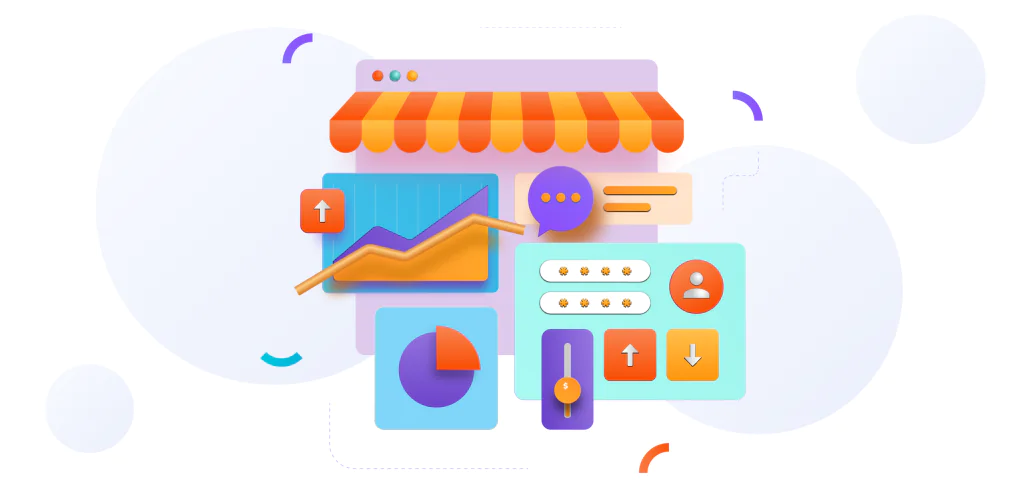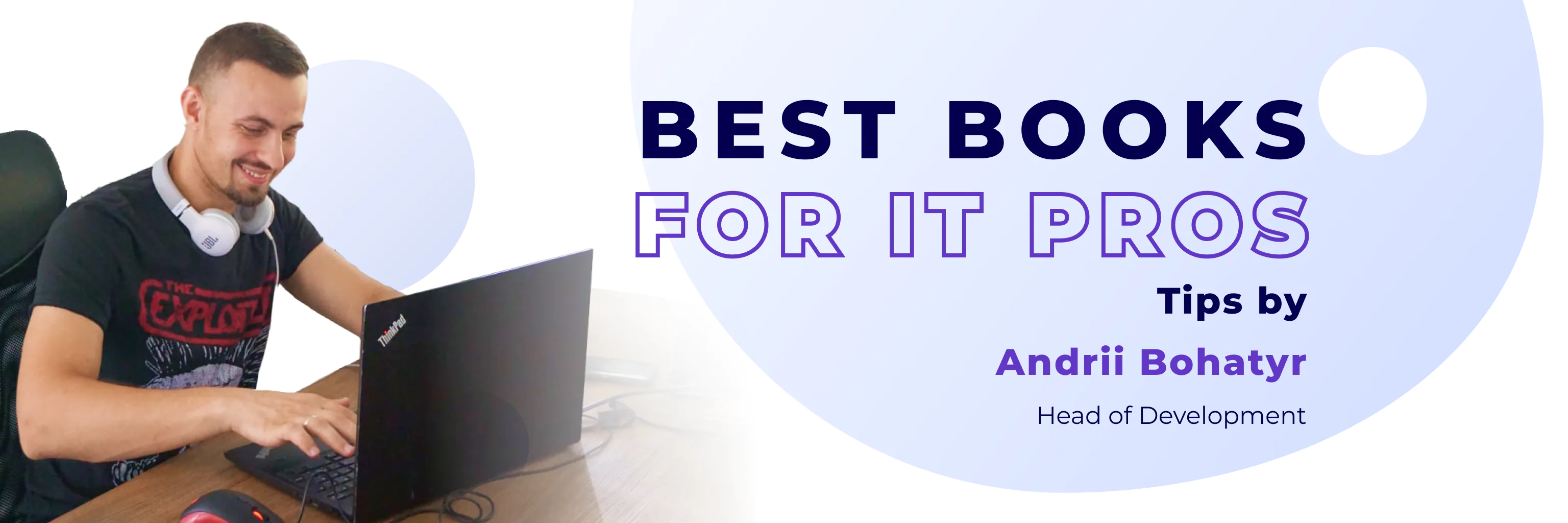The world of online shopping is insanely competitive now. So, eCommerce website development has become true art. You need to hire outstanding experts in multiple areas to create a site that will stand out and give your business a chance at success.
Bear in mind that creating an excellent eCommerce site is complicated, despite 500-word step-by-step guides that tell you otherwise. An online store that can attract people and nurture customer loyalty is a complex machine produced and maintained by highly-skilled professionals. This guide explains how to build one for a business with any budget.
How to Choose an ECommerce Website Development Company
Decide whether you need an end-to-end eCommerce solution
First of all, you need to decide whether you need an end-to-end eCommerce solution development or if you are going to build a website based on an open-source eCommerce platform. Of course, the main deciding factor here is the scale of the project you plan. If you want to launch a versatile marketplace for multiple businesses, you should look into eCommerce platform development from the start.
However, launching on an existing platform like Shopify or Magento can be the best choice for the majority of businesses. Even if you plan to offer thousands of products from the get-go, these platforms can support it.
Basically, it would be best to discuss your business plan with expert developers. Then, they can advise which is the better route for eCommerce website development based on your business plan.
There are three most common ways to go about creating an eCommerce website:
- Build an eCommerce solution from scratch or using open-source software.
- Customize a SaaS eCommerce platform to suit your needs.
- MACH architecture.
MACH stands for Microservices, API-first, Cloud-native, and Headless. This architecture is the best option for businesses planning to scale and grow fast. Compared to monolithic solutions, they are much more flexible. Moreover, this type of eCommerce business will be able to add and remove various features as needed without bringing down the whole system.
Understand and compare eCommerce developers’ strengths
Every developer, no matter how great their skill, has a specialization. The same goes for a custom software development company. It means that when choosing a development team, you need to do a lot of research. Take a look at the developers’ case studies and make your own assessment. Study customer reviews if they are available. Also, take a look at the company’s ranking on websites like Clutch.
However, you should also remember that many software development projects are under NDAs. Therefore, the developers might not be able to show off their complete portfolio. That’s why you should also arrange an interview to make your assessment.
When doing your research, make a list of every developer’s strengths. Then, think about what you want from your website and see whether they can deliver the results you want.

Must-Have Features for an End-to-End ECommerce Solution
When planning the eCommerce website development process, you need to outline your customer lifecycle in detail. Use the data to determine what features your online store should have. Consider the following guidelines to make these decisions:
- Make a generalized list of eCommerce store features. Doing some competitor research will be a great help here.
- Make a list of your personal must-have features for the store. For example, this can be business-specific features like tax or international shipping rates calculators.
- Prioritize every feature in those lists from 1 to 5.
- Discuss the costs of adding each feature with your eCommerce application development company.
- Make your final decision and build plans for upgrades and expansion.
Bear in mind that some features might heavily affect eCommerce website development costs. Therefore, your budget will be a deciding factor in your plans. However, some features are absolute must-haves for any modern eCommerce business.
Responsive web design
In 2022 if you aren’t doing it mobile-first, you are doing it wrong. The number of people who prefer mobile shopping is growing exponentially every year. In addition, today, you can’t really have a high Google ranking if your website isn’t mobile-friendly.
Therefore, the responsive design must be the basis of any eCommerce website development in 2022 and beyond. But you also need to understand that nowadays you have many options to be mobile-friendly.
The good news is that all leading eCommerce platforms offer responsive design capabilities. Therefore, your developer shouldn’t have any issues optimizing your shop for multiple devices if you are using them.
However, your approach can be different if you plan to launch an enterprise-level business and want to do your eCommerce platform development from scratch. In this case, you should talk with your development team about making a mobile eCommerce app. It can be a more cost-efficient idea in the long run.
SEO capabilities (+CMS)
Any eCommerce business must attract organic traffic in droves. Therefore, you need to consider SEO at the early stages of eCommerce website development. Your site must be designed for the highest level of optimization. Moreover, it must have specialized SEO capabilities that will allow you to improve the site with time.
For example, you need to think about how you will add content to the website. Better SEO requires renewing product pages and adding new pages, like blog articles or informative pages about the business. In addition, these new pages must have optimized templates to make it easier for you to boost the website fast.
Speaking of content, an eCommerce website should have a CMS (content management system) to make working with it more manageable. It allows you to handle and store all dynamic content with ease. Most importantly, a CMS allows you to make quick changes that will be immediately and automatically implemented across the website.
Loading speed
The bounce rate grows with every extra second your website takes to load. So nearly 100% of people who come to your website will leave it if it takes as little as six seconds to load. That’s how much speed matters.
Since online shops must offer rich visual content to increase conversion, clever eCommerce website development is essential. The team working on your site must have the experience and skills to optimize it to the max. This kind of optimization might require quite a bit of back-end work. So, make sure that the developers have expertise in this area.
Moreover, website loading speed is a Google ranking factor. Therefore, it is a part of the website SEO that must be integrated at the level of design.
Product management system
What can be worse than placing an order for an item you want, marked ‘in stock’, and then getting an email that the product isn’t really in stock? Everyone has undoubtedly experienced this kind of frustration. Did you return to that store after such an experience?
In the age of extreme competition that we live in, such mistakes are deadly for an eCommerce business. Therefore, it’s imperative to build an effective product management system while developing your store. It must make it easy for you to:
- Add new products
- Automatically update and manage the inventory
- Edit product pages
- Realize promotions and discount codes
Payments and checkout
It’s essential for eCommerce website development to integrate multiple payment gateways from the start. Nowadays, diversity is critical for global businesses. Every buyer seeks convenience. If you aren’t offering all the popular payment types in your region, you’ll lose clients.
ECommerce website development for businesses that target multiple countries will be more complex. It’s because the payment gateways must support multiple currencies and have a converter feature.
Moreover, the entire checkout process must be streamlined to the max. It’s essential because a quick and efficient payment process often motivates people to buy more. Therefore, you must make your payment and checkout as short as possible so people can complete a purchase in a few clicks.
Meanwhile, your eCommerce application development company must ensure the security remains top-notch. It means facilitating the checkout process must not affect the security measures of the payment processing provider. Trusted providers would have a set of requirements for integrating them into an eCommerce shop. Your developers will have to study them carefully to ensure full compliance.
Integrations
Even if you are doing an eCommerce platform development from scratch, it will require some integrations with third-party software. Therefore, your website must have capabilities for integrating solutions and plugins you might require. Bear in mind that you need to think ahead when planning this. Your need for integrations might increase as your business grows.
When using an existing eCommerce platform, your developers must ensure that integrations with various solutions are possible. Unfortunately, not all platforms are equal in this, so you have to pick the one that will work with every solution you want to use.
Moreover, maintaining the cohesiveness of all integrations is an essential task for the developers who will manage your website. Remember that every plugin update risks adding vulnerabilities or even crashing the entire system.
Security
PCI compliance, as well as top-notch cybersecurity, are essential requirements during eCommerce website development. These sites handle a lot of sensitive information, including credit card details. Therefore, they have to be above reproach. Moreover, meeting various specialized compliance criteria is a must to be allowed to process payments.
Your development team must understand that and know how to make your store safe. Breaking any of these requirements might result in not only in loss of trust from your customers, but also in hefty penalties. You might even lose the right to accept payments.
Moreover, you need to understand that threats evolve rapidly in the digital space. Therefore, your development team must be able to provide you with a dynamic information security system that will help keep up the safety of your business.

ECommerce Website Development Step by Step
Define your product offering range
The first thing to do when planning an online store is to decide what you will sell. How you make this decision is up to you. It can be a passion-driven choice, or you can study the market to find the most promising niches. However, you must outline at least the initial product offering range.
Once you do this, you will be able to decide on product categories and make a draft of your future website map. It will also be helpful to study your prospective competitors’ sites and find issues they have. Your own website must fill in those holes, thus offering customers a better shopping experience.
Set business goals
Your eCommerce website development should be preceded by creating a clear business plan. It means that you must start by setting exact goals and metrics for your business.
First of all, outline the goals:
- Is your primary goal to build a direct-to-consumer online-only business?
- Do you want to expand your B2C business with B2B capabilities, or vice versa, using eCommerce?
- Do you need to grow your existing brick-and-mortar business by bringing it online?
The metrics you should consider during eCommerce website development include
- Business growth.
Decide how exactly you will measure it, for example, through weekly/monthly/quarterly sales and revenues, ROI, etc. - Local and international sales.
Decide from the start whether you plan on selling globally, as this will affect the features your eCommerce website must have. - Customer Lifetime Value.
Decide how you will measure and plan to grow CLV at the business planning stage. - Sales.
Think about how many products you need to sell to turn in a profit and how you expect these sales to grow over time.
Define your target audience for eCommerce website development
Whether your business plan is B2B or B2C will help define the website structure and design. However, you also need to research your target audience in-depth. You need to know what these people like and dislike in everyday lives, not only concerning your specific niche. This way, you’ll be able to provide them with a better shopping experience.
Never forget that you can find inspiration in the most unlikely of places. Also, if you target a specific generation, like Gen-Z, you need to understand their preferences in tech. This will help you decide on website functionality and various features that must be included at launch.
Outline the desired shopping experience
You need to plan the exact shopping experience step by step. First, take note of every action your customers will take to make a purchase. Then, think about how to make the process as smooth as possible.
Remember that every extra action reduces the chance of a conversion. Therefore, you must aim to make the user experience straightforward and smooth.
Some ideas to consider:
- What filters do you need to include in the website search?
- Can you provide a one-page checkout?
- Do you need to integrate a product comparison feature?
- How will you realize the function of discounts, coupons, and promo codes?
Consider eCommerce platform development options
If you plan to build an end-to-end eCommerce solution, you must make a considerable investment. However, today you don’t have to do this from the start. There are dozens of eCommerce platforms that allow you to set up any kind of shop. This will reduce the workload on developers. Therefore, you will be able to use your budget more efficiently.
Many of the top-grade platforms allow for scalability. So, you will be able to scale up your shop with ease. Meanwhile, as your business progresses to the next level, you can start the development of an end-to-end eCommerce solution.
Many of the top platforms have multiple plugins that make it easy to add any features you need. However, not all these platforms are the same. Therefore, you should research their capabilities carefully. Talk to your developers, as they should be able to offer advice on which platform is best suited to your business goals. Today’s most popular options are Shopify, Magento, BigCommerce, and WooCommerce. Each of them has some important pros and cons. Therefore, you should choose what meets your specific needs best.
Define the procedure to add new products
The process of adding and editing products must be supremely easy for you. Therefore, discuss this with developers in detail and make sure you resolve any issues regarding:
- Syncing the inventory across all sales channels you have.
- Adding high-res product images and videos without bringing down the website loading speed.
- Ease of adding and editing structured product descriptions with SEO elements.
Most importantly, the process has to be set up in such a way that you can add products without involving developers. It means that not only does the process need to be simple. It’s also crucial to set it up so that it won’t bring down the website if you make a simple mistake.
Integrate payment and shipping
It’s a vitally important step in eCommerce website development. Even if you are using an eCommerce platform to build your shop, using the services of an experienced developer is a must. The expert will be able to set up the payment gateways and checkout, so everything runs smoothly.
You will need to offer multiple payment options. So, the developer will have to ensure that they are secure and reliable. The task will be more complicated for businesses that target an international audience. In this case, you will need more diverse payment gateways. Also, consider integrating a specialized bookkeeping solution to help you keep track of your finances and generate reports.
When dealing with international payments, you also need to research the regions carefully. Despite what some providers claim, some e-wallets and digital payment services are banned in specific regions. So, you need to make sure that the payment gateways you choose are actually supported by the areas where your audience resides. Moreover, make sure that the transaction fees they offer are reasonable.
Develop and implement a content strategy
You must have a content strategy ready before getting to actual eCommerce website development. It’s because the site will be much better when it’s built with actual content instead of fillers.
Note that the content strategy is vital for eCommerce. It’s because the content is a parge part of SEO. In turn, SEO is key to attracting organic traffic, which is the primary source of income for online stores.
Your content strategy must cover the following:
- Establishing a consistent brand voice
- Creating a structure for informative, captivating, and search engine optimized product descriptions
- Creating additional information pages about your brand’s history, products, materials, mission, vision, etc.
- Adding a blog for continuous SEO improvements
- Integrating social media into the website
Remember that content is not only text. All the images, videos, GIFs, and graphics on the site also count as content. Therefore, you need to keep all of them in the same style and quality.
Moreover, all content must be fresh and relevant. So, you must make sure that there is a way for you to update and add new pages easily. Whether you are building an end-to-end eCommerce solution or a small website, you must make it so that content can be updated without involving a developer.

Test and launch the website
Finally, you are ready to take the most important final steps with all that done. First, your eCommerce website must undergo thorough QA testing. There are different types of quality assurance testing that will be used. Your developers should be able to perform it or advise how to best go about it.
You can use this simple checklist for testing your website personally:
- Check all CTAs and other buttons
- Check all the forms
- Test the checkout process in every possible way
- Double-check every payment processing option you offer
- Go over product categories and descriptions to make sure everything is in its proper place
- Check every image and video to ensure their quality matches
- Check every link
- Go over the inventory to make sure everything is right
- Test the coupons/promo codes feature
- Test the shipping settings
When every test is complete, and you are sure that the website runs smoothly, you can launch!
But remember that you’ll need to do quite a bit of marketing pre-launch to make sure that people come to the Big Day. In fact, you should start marketing your business and building your brand while your eCommerce website is still in development.
Bottom Line: The Long Road to ECommerce Website Development
Creating an eCommerce website that is sure to rock is a task that takes a special kind of skill. It also requires a team that’s expert not only in development but also in business analysis, project management, cybersecurity, and marketing.
When you have all these experts working together, your online shop is guaranteed to be successful. Contact us if you want to see how it works!





















